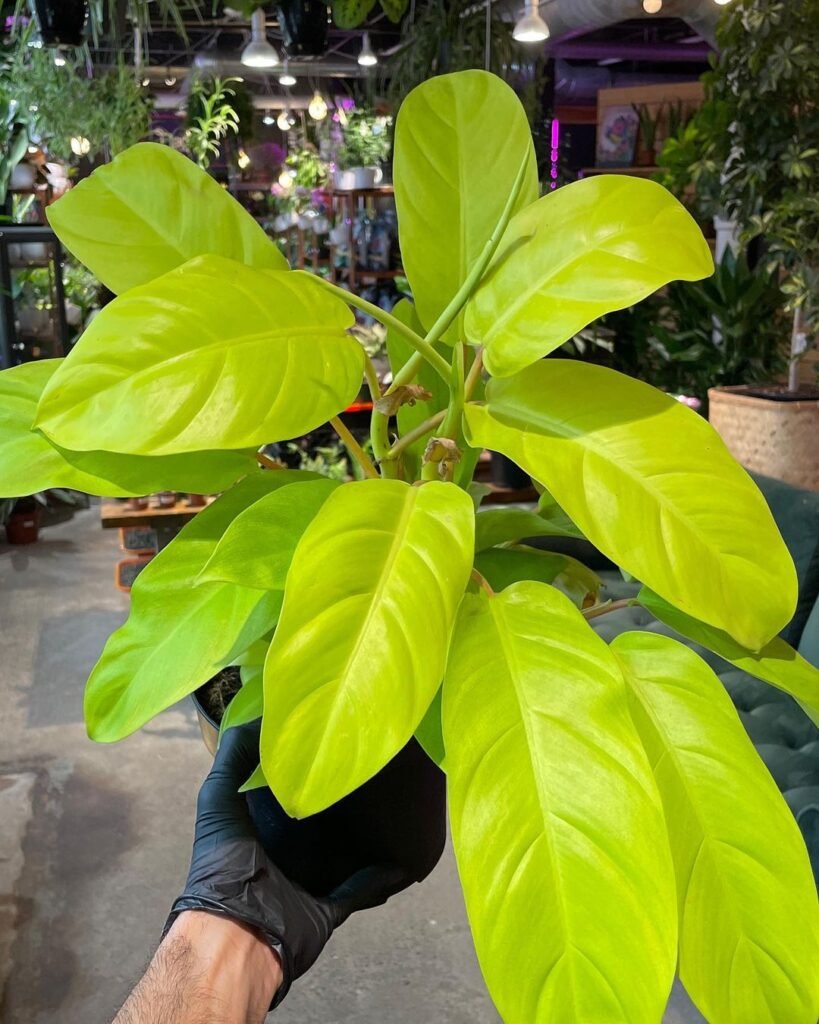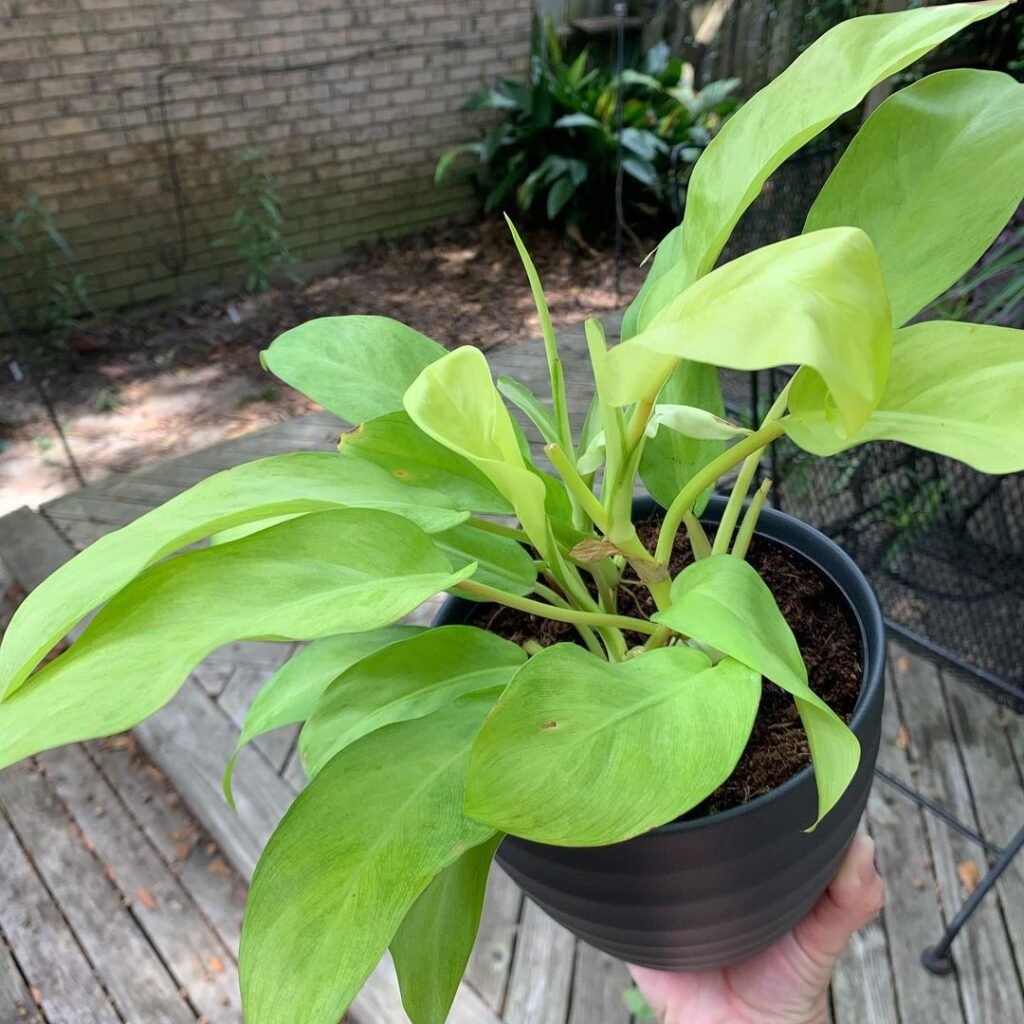Learn how to successfully grow and care for the stunning golden goddess philodendron with this comprehensive guide. Discover tips for light, watering, humidity, soil, fertilizing, pruning, and propagation. Troubleshoot common issues and enjoy the vibrant foliage of this tropical beauty.
If you’re a plant enthusiast on the hunt for a showstopping addition to your indoor jungle, look no further than the golden goddess philodendron. This stunning variety, also known as the philodendron melanochrysum, is prized for its large, vibrant yellow leaves that are sure to brighten up any space. While the golden goddess may look exotic and challenging to care for, it’s actually a relatively low-maintenance plant that can thrive with the right growing conditions. In this comprehensive guide, we’ll cover everything you need to know to successfully cultivate and care for this tropical beauty.
Understanding the Golden Goddess Philodendron

Before we dive into the care requirements, let’s take a moment to appreciate the unique characteristics of the golden goddess philodendron. As its name suggests, this variety is known for its striking golden-yellow leaves that can reach up to 2 feet in length. The leaves are oval-shaped and feature a glossy, leathery texture that adds to their exotic appeal.
The golden goddess is a climbing philodendron, which means it will naturally produce aerial roots and vines as it grows. This growth habit makes it a great choice for training up a moss pole or trellis, where it can showcase its cascading vines and stunning foliage.
Native to the tropical regions of South America, the golden goddess philodendron is a member of the Araceae family, which also includes other popular houseplants like monstera deliciosa and pothos.
Light Requirements

One of the most important factors in keeping your golden goddess philodendron happy and healthy is providing the right amount of light. This variety prefers bright, indirect light, similar to what it would receive on the forest floor in its natural habitat.
When it comes to light exposure, there’s a delicate balance to strike. Too much direct sunlight can scorch the leaves and cause them to fade or bleach, while too little light can result in leggy growth and a lack of the vibrant golden color.
An ideal spot for your golden goddess would be near an east or west-facing window, where it can receive several hours of bright, filtered light each day. If you don’t have a suitable window location, you can also use grow lights to supplement the plant’s light needs.
Watering and Humidity

Like many tropical plants, the golden goddess philodendron prefers consistent moisture and high humidity levels. Here are some tips for proper watering and humidity management:
Watering:
- Water your plant when the top inch or two of soil feels dry to the touch.
- Thoroughly soak the soil until water runs out of the drainage holes, then allow the excess water to drain away.
- Avoid letting the soil dry out completely, as this can cause the leaves to wilt and the plant to become stressed.
- During the winter months when growth slows down, you can slightly reduce watering to prevent oversaturation.
Humidity:
- The golden goddess thrives in humidity levels above 50%.
- If your home is particularly dry, you can increase humidity by using a humidifier, setting the plant on a pebble tray filled with water, or grouping it with other plants to create a humid microclimate.
- Regularly misting the leaves can also help boost humidity levels around the plant.
Signs of improper watering or humidity include yellowing or browning leaves, wilting, and leaf drop. Adjust your care routine accordingly if you notice any of these issues.
Soil and Potting

The golden goddess philodendron does best in a well-draining, nutrient-rich potting mix. Here are some tips for choosing the right soil and potting your plant:
Soil Mix:
- Use a high-quality potting mix formulated for tropical plants or create your own blend by combining equal parts peat moss, perlite, and bark chips or orchid bark.
- The mix should be loose and airy to allow for proper drainage and air circulation around the roots.
- Avoid using heavy, dense soil mixes that can become compacted and waterlogged.
Potting:
- Choose a pot with drainage holes to prevent waterlogging and root rot.
- Select a pot that is only slightly larger than the current root ball, as philodendrons prefer to be slightly rootbound.
- When repotting, gently loosen the root ball and replant in fresh soil, taking care not to damage the delicate roots.
- Repot your golden goddess every 1-2 years or when the plant becomes rootbound.
Fertilizing

To encourage healthy growth and vibrant leaf coloration, it’s important to fertilize your golden goddess philodendron regularly. Here are some tips for proper fertilization:
Fertilizer:
- Use a balanced, water-soluble fertilizer formulated for tropical plants or a slow-release fertilizer designed for houseplants.
- Avoid using fertilizers high in nitrogen, as this can promote excessive leaf growth at the expense of healthy root development.
Application:
- During the spring and summer growing season, fertilize your plant every 4-6 weeks.
- Follow the manufacturer’s instructions for proper dilution and application rates.
- Avoid fertilizing during the winter months when growth slows down.
It’s also a good idea to periodically flush the soil with plain water to prevent the buildup of excess fertilizer salts, which can damage the roots and leaves.
Pruning and Propagation

Pruning and propagation are important aspects of caring for your golden goddess philodendron and encouraging its healthy growth and longevity.
Pruning:
- Prune away any yellowed, damaged, or dead leaves as needed using clean, sharp scissors or pruning shears.
- Trim back leggy or overgrown vines to maintain the desired shape and encourage bushier growth.
- Avoid removing more than one-third of the plant’s foliage at a time to prevent excessive stress.
Propagation:
- The golden goddess can be easily propagated from stem cuttings, allowing you to create new plants or share with friends and family.
- Take a 4-6 inch cutting from a healthy stem, making sure to include at least one node (where the leaf attaches to the stem).
- Remove the lower leaves and place the cutting in a jar or glass of water, ensuring the node is submerged.
- Once roots have formed (usually within a few weeks), you can transplant the cutting into a well-draining potting mix.
Propagation is not only a great way to multiply your plant collection, but it can also help rejuvenate an older or leggy golden goddess by encouraging new growth.
Common Issues and Troubleshooting

While the golden goddess philodendron is generally a hardy and low-maintenance plant, it can sometimes encounter a few common issues. Here’s how to identify and address some of the most common problems:
Yellowing or Browning Leaves:
- This can be a sign of overwatering, underwatering, or low humidity.
- Check the soil moisture levels and adjust your watering schedule accordingly.
- Increase humidity levels around the plant if necessary.
Leaf Drop:
- Sudden or excessive leaf drop can be caused by a variety of factors, including underwatering, low humidity, temperature fluctuations, or pest infestations.
- Assess the plant’s growing conditions and make any necessary adjustments to address the underlying issue.
Pests:
- Common houseplant pests like spider mites, mealybugs, and scale insects can sometimes infest the golden goddess philodendron.
- Regularly inspect your plant and treat any infestations promptly with insecticidal soap or neem oil, following the product instructions carefully.
By providing the right growing conditions, proper care, and addressing any issues promptly, you can keep your golden goddess philodendron thriving and enjoying its stunning golden foliage for years to come.
With its eye-catching leaves and unique growth habit, the golden goddess philodendron is a true showstopper that adds a touch of tropical flair to any indoor space. Whether you’re an experienced plant parent or a beginner, this variety is a rewarding and relatively low-maintenance choice that will brighten up your home and bring a taste of the rainforest indoors.
Pingback: Mastering Light for Your Philodendron White Knight: A No-Fuss Guide
Pingback: The Ultimate Guide to Cleistocactus Icosagonus